Facts for Syllogism: Syllogism is a word which everybody has heard of or even had to use in practice. This modern form of logical reasoning is almost always associated with aptitude tests and assessment training nowadays. But what is the origin of this word, what does syllogisms mean and more important how to solve it?
Solving Method for Syllogisms
Syllogism can be solved in many ways, however the most frequently used method is by using the so called Venn diagrams. Venn diagrams show all possible and hypothetically logical relations between a collection of finite and infinite statements. By means of an overlap between some certain assumptions conclusions can be made using the (in)finite statements. Next a few syllogism examples will follow in which words will be classified and the syllogism will be checked on validity.
Solved Questions For Syllogism
Example: 1. All Canadians are right handed
2. All right handed are opticians
3. Conclusion: Some opticians are Canadian
Solution :To check the validity of this statement first the different terms are appointed.
Subject: Optician
Predicate: Canadian
Middle term: Right handed
Since the two premises (a and b) from the example are valid, the conclusion must be valid two, since it is not possible for the premises to be true and the conclusion to be false.
Example 2:
All mortals die
All men are mortals
Conclusion: All men die
To check the validity of this statement first the different terms are appointed.
Solution :
Subject: Men
Predicate: Die
Middle term: Mortal
Again it can be concluded that the two premises (a and b) are valid and so is the conclusion. This is in general always the case with syllogisms, which is a form of logical reasoning of the deductive reasoning type. For more information about different types of syllogisms, you can take a look at our related pages shown below.
Syllogisms-Types and Examples
1. Conditional syllogisms :Conditional syllogisms are better known as hypothetical syllogisms, because the arguments used here are not always valid. The basic of this syllogism type is: if A is true then B is true as well.
Example 3: Major premise: If Johnny is eating sweets every day, he is placing himself at risk for diabetes.
Minor premise: Johnny does not eat sweats everyday
Conclusion:Therefore Johnny is not placing himself at risk for diabetes
Solution :
This conclusion is invalid because it is possible that Johnny does not eat sweats every day but does eats cake every day what also puts him at risk for diabetes.
2. Disjunctive syllogisms : These syllogism types do not actually state that a certain premise (major or minor) is correct, but is does states that one of the premises is correct. The basic type for this syllogism is: Either A or B is true, but they can’t be true at the same time.
Example 4:
Major premise: Either the meeting is at school or at home.
Minor premise: The meeting is not at home.
Conclusion:Therefore the meeting is at school.
Solution :
The conclusion of the syllogism type may be given, however most of the times the conclusion can be drawn based up on own conclusions.
Syllogism Questions from Previous Year Exams.
Quiz-summary
0 of 19 questions completed
Questions:
- 1
- 2
- 3
- 4
- 5
- 6
- 7
- 8
- 9
- 10
- 11
- 12
- 13
- 14
- 15
- 16
- 17
- 18
- 19
Information
Syllogism
You have already completed the quiz before. Hence you can not start it again.
Quiz is loading...
You must sign in or sign up to start the quiz.
You have to finish following quiz, to start this quiz:
Results
0 of 19 questions answered correctly
Your time:
Time has elapsed
You have reached 0 of 0 points, (0)
| Average score |
|
| Your score |
|
Categories
- Not categorized 0%
- 1
- 2
- 3
- 4
- 5
- 6
- 7
- 8
- 9
- 10
- 11
- 12
- 13
- 14
- 15
- 16
- 17
- 18
- 19
- Answered
- Review
-
Question 1 of 19
1. Question
1 pointsIn each of the questions below are given three statements followed by two conclusions numbered I and II. You have to take the given statements to be true even if they seem to be at variance from commonly known facts. Read all the conclusions and then decide which of the given conclusions logically follows from the given statements disregarding commonly known facts.
Statements : All cards are boxes.
I. No box is slate.
II. Some slates are tiles.
Conclusions
I. No slate is card.
II. Some tiles are boxes.
Correct
Incorrect
According to the statements, the Venn-diagram will be

-
Question 2 of 19
2. Question
1 pointsIn each of the questions below are given three statements followed by two conclusions numbered I and II. You have to take the given statements to be true even if they seem to be at variance from commonly known facts. Read all the conclusions and then decide which of the given conclusions logically follows from the given statements disregarding commonly known facts.
Statements: Some papers are arrows.
All arrows are sticks.
Some sticks are boards.
Conclusions :
I. Some boards are papers.
II. No board is paper.
Correct
Incorrect
According to the statements, Venn-Diagram will be

-
Question 3 of 19
3. Question
1 pointsIn each of the questions below are given three statements followed by two conclusions numbered I and II. You have to take the given statements to be true even if they seem to be at variance from commonly known facts. Read all the conclusions and then decide which of the given conclusions logically follows from the given statements disregarding commonly known facts.
Statements
I.All ropes are tiles.
II. Some tiles are bangles.
III. All bangles are nails.
Conclusions
I. Some nails are ropes.
II. Some nails are tiles.
Correct
Incorrect
According to the statements, the Venn-daigram will be

-
Question 4 of 19
4. Question
1 pointsIn each of the questions below are given four statements followed by four conclusions numbered I, II, III and IV. You have to take the given statements to be true even if they seem to be a
variance from commonly known facts. Read all the conclusions and then decide which of the given conclusions logically follows from the given statements disregarding.commonly known facts.Statements
All rings are phones.
All phones are spoons.
Some phones are files.
All files are covers.
Conclusions
I. Some files are rings.
II. Some covers are spoons.
III. Some spoons are phones.
IV. Some rings are covers.
Correct
Incorrect
According to the statements, the Venn-diagram will be

-
Question 5 of 19
5. Question
1 pointsIn each of the questions below are given four statements followed by four conclusions numbered I, II, III and IV. You have to take the given statements to be true even if they seem to be a
variance from commonly known facts. Read all the conclusions and then decide which of the given conclusions logically follows from the given statements disregarding.commonly known facts.Statements
Some carpets are books.
All books are pens.
Some pens are cartoons.
All cartoons are notebooks.
Conclusions
I. Some cartons are carpets.
IL Some catroons are books.
III. Some pens are carpets.
IV. Some notebooks are pens.
Correct
Incorrect
According to the statements, the Venn-diagram will be

-
Question 6 of 19
6. Question
1 pointsTwo statements are given and these statements are followed by two conclusions numbered (1) and (2). You have to take the given two statements to be true even if they seem to be at variance from commonly known facts. Read the conclusions and then decide which of the given conclusions logically follows from the two given statements, disregarding commonly known facts.
Statements: Some actors are singers. All the singers are dancers.
Conclusions:
- Some actors are dancers.
- No singer is actor.
Correct
 Incorrect
Incorrect

-
Question 7 of 19
7. Question
1 pointsTwo statements are given and these statements are followed by two conclusions numbered (1) and (2). You have to take the given two statements to be true even if they seem to be at variance from commonly known facts. Read the conclusions and then decide which of the given conclusions logically follows from the two given statements, disregarding commonly known facts.
Statements: All the harmoniums are instruments. All the instruments are flutes.
Conclusions:
- All the flutes are instruments.
- All the harmoniums are flutes.
Correct
 Incorrect
Incorrect

-
Question 8 of 19
8. Question
1 pointsTwo statements are given and these statements are followed by two conclusions numbered (1) and (2). You have to take the given two statements to be true even if they seem to be at variance from commonly known facts. Read the conclusions and then decide which of the given conclusions logically follows from the two given statements, disregarding commonly known facts.
Statements: Some mangoes are yellow. Some tixo are mangoes.
Conclusions:
- All the flutes are instruments.
- All the harmoniums are flutes.
Correct
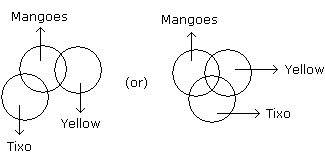 Incorrect
Incorrect

-
Question 9 of 19
9. Question
1 pointsTwo statements are given and these statements are followed by two conclusions numbered (1) and (2). You have to take the given two statements to be true even if they seem to be at variance from commonly known facts. Read the conclusions and then decide which of the given conclusions logically follows from the two given statements, disregarding commonly known facts.
Statements: Some ants are parrots. All the parrots are apples.
Conclusions:
- All the apples are parrots.
- Some ants are apples.
Correct
 Incorrect
Incorrect

-
Question 10 of 19
10. Question
1 pointsTwo statements are given and these statements are followed by two conclusions numbered (1) and (2). You have to take the given two statements to be true even if they seem to be at variance from commonly known facts. Read the conclusions and then decide which of the given conclusions logically follows from the two given statements, disregarding commonly known facts.
Statements: All the actors are girls. All the girls are beautiful.
Conclusions:
- All the actors are beautiful.
- Some girls are actors.
Correct
 Incorrect
Incorrect

-
Question 11 of 19
11. Question
1 pointsTwo statements are given and these statements are followed by two conclusions numbered (1) and (2). You have to take the given two statements to be true even if they seem to be at variance from commonly known facts. Read the conclusions and then decide which of the given conclusions logically follows from the two given statements, disregarding commonly known facts.
Statements: All the windows are doors. No door is a wall.
Conclusions:
- Some windows are walls.
- No wall is a door.
Correct
 Incorrect
Incorrect

-
Question 12 of 19
12. Question
1 pointsTwo statements are given and these statements are followed by two conclusions numbered (1) and (2). You have to take the given two statements to be true even if they seem to be at variance from commonly known facts. Read the conclusions and then decide which of the given conclusions logically follows from the two given statements, disregarding commonly known facts.
Statements: All cups are books. All books are shirts.
Conclusions:
- Some cups are not shirts.
- Some shirts are cups.
Correct
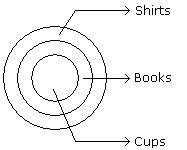 Incorrect
Incorrect

-
Question 13 of 19
13. Question
1 pointsTwo statements are given and these statements are followed by two conclusions numbered (1) and (2). You have to take the given two statements to be true even if they seem to be at variance from commonly known facts. Read the conclusions and then decide which of the given conclusions logically follows from the two given statements, disregarding commonly known facts.
Statements: Some cows are crows. Some crows are elephants.
Conclusions:
- Some cows are elephants.
- All crows are elephants.
Correct
 Incorrect
Incorrect

-
Question 14 of 19
14. Question
1 pointsTwo statements are given and these statements are followed by two conclusions numbered (1) and (2). You have to take the given two statements to be true even if they seem to be at variance from commonly known facts. Read the conclusions and then decide which of the given conclusions logically follows from the two given statements, disregarding commonly known facts.
Statements: All the pencils are pens. All the pens are inks.
Conclusions:
- All the pencils are inks.
- Some inks are pencils.
Correct
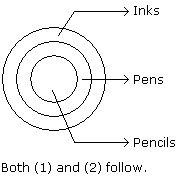 Incorrect
Incorrect

-
Question 15 of 19
15. Question
1 pointsTwo statements are given and these statements are followed by two conclusions numbered (1) and (2). You have to take the given two statements to be true even if they seem to be at variance from commonly known facts. Read the conclusions and then decide which of the given conclusions logically follows from the two given statements, disregarding commonly known facts.
Statements: Some dogs are bats. Some bats are cats.
Conclusions:
- Some dogs are cats.
- Some cats are dogs.
Correct
 Incorrect
Incorrect

-
Question 16 of 19
16. Question
1 pointsTwo statements are given and these statements are followed by two conclusions numbered (1) and (2). You have to take the given two statements to be true even if they seem to be at variance from commonly known facts. Read the conclusions and then decide which of the given conclusions logically follows from the two given statements, disregarding commonly known facts.
Statements: All the trucks are flies. Some scooters are flies.
Conclusions:
- All the trucks are scooters.
- Some scooters are trucks.
Correct
 Incorrect
Incorrect

-
Question 17 of 19
17. Question
1 pointsTwo statements are given and these statements are followed by two conclusions numbered (1) and (2). You have to take the given two statements to be true even if they seem to be at variance from commonly known facts. Read the conclusions and then decide which of the given conclusions logically follows from the two given statements, disregarding commonly known facts.
Statements: All buildings are chalks. No chalk is toffee.
Conclusions:
- No building is toffee
- All chalks are buildings.
Correct
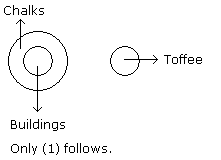 Incorrect
Incorrect

-
Question 18 of 19
18. Question
1 pointsTwo statements are given and these statements are followed by two conclusions numbered (1) and (2). You have to take the given two statements to be true even if they seem to be at variance from commonly known facts. Read the conclusions and then decide which of the given conclusions logically follows from the two given statements, disregarding commonly known facts.
Statements: All cars are cats. All fans are cats.
Conclusions:
- All cars are fans.
- Some fans are cars.
Correct
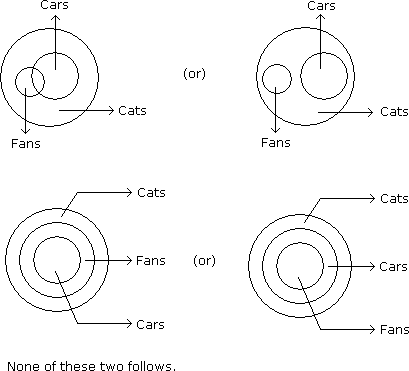 Incorrect
Incorrect

-
Question 19 of 19
19. Question
1 pointsTwo statements are given and these statements are followed by two conclusions numbered (1) and (2). You have to take the given two statements to be true even if they seem to be at variance from commonly known facts. Read the conclusions and then decide which of the given conclusions logically follows from the two given statements, disregarding commonly known facts.
Statements: No door is dog. All the dogs are cats.
Conclusions:
- No door is cat.
- No cat is door.
- Some cats are dogs.
- All the cats are dogs
Correct
 Incorrect
Incorrect


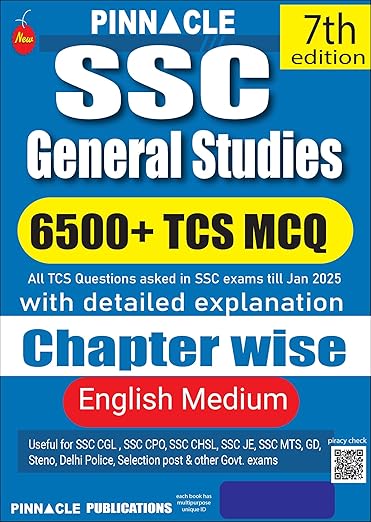
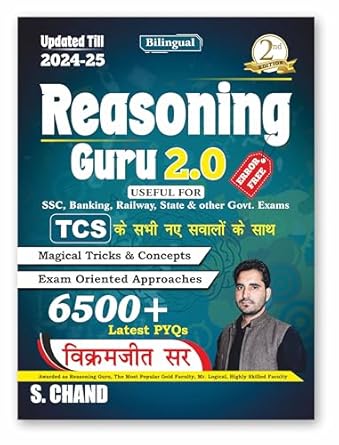
Question 13 is wrong please recheck the answer
sir statement of question is not clear how can i practice now?
Would you mind if you give me pdf of all reasoning questions
All video lectures are not available.